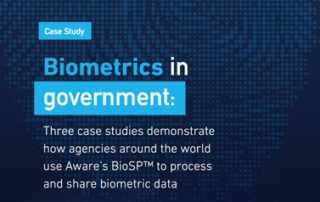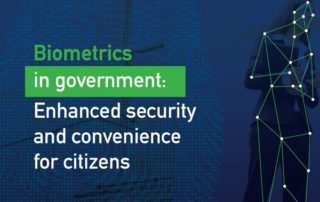Three case studies demonstrate how agencies around the world use Aware’s BioSP™ to process and share biometric data
Thank you for your interest in: Three case studies demonstrate how agencies around the world use Aware’s BioSP™ to process and share biometric data The link to download the PDF has been sent to the email address provided. Want to learn more about BioSP? Schedule a demo to get started today
Biometrics in government: Enhanced security and convenience for citizens | eBook
Biometrics in government: Enhanced security and convenience for citizens A brief history of biometrics Fingerprint-based identification began in law enforcement. An Argentine detective first solved a crime using a latent print (left behind by the perpetrator) in 1892. In 1901, detectives in England and Wales officially began using fingerprints in criminal identification. Their use snowballed from there. By 1946, the FBI managed a library of 100 million fingerprints, according to the U.S. Marshals Service. The agency developed the Automated Fingerprint Identification System (AFIS) in the 1970s to manage the massive and still-growing collection more effectively. AFIS became “Integrated [...]




